I wanted to hike the Lost Coast Trail with my two young kids. How hard could it be?
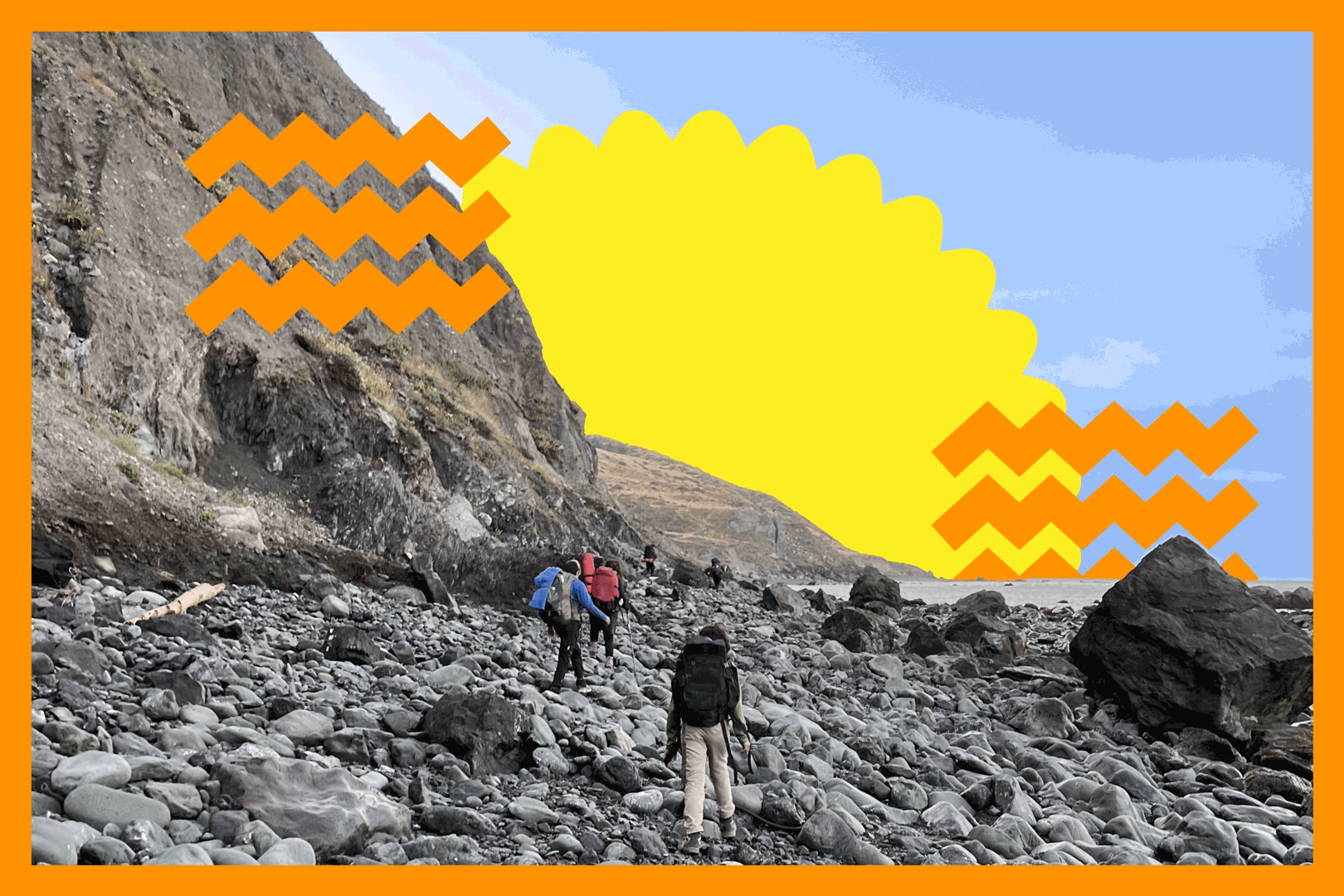
Editor’s note: The Wild is all about featuring a variety of exciting voices from Southern California’s outdoors scene. For the next several weeks, we’re featuring guest writers (whom we’ve dubbed “wilders” ) from around The Times who are eager to share their adventures with you. This week’s guest wilder is Seth Liss, director of audience engagement, who lives in Long Beach and likes to swim, hike and camp in his free time. He follows the NBA, listens to music and makes pizza. He aspires to do more traveling, reading and surfing.
Planning a summer trip with kids can be challenging, especially when you’re not much of a planner.
Last-minute airline prices are exorbitant. Tourist destinations are packed. Campgrounds are booked. And family visits are … family visits.
So I thought I had a brilliant idea when I decided to re-create — as a family with two young children (Devash, 11, and Ettan, 8 at the time of our August hike) — a trip my wife Julie and I did more than 10 years ago when we’d hiked the Lost Coast region in Humboldt County.
Get The Wild newsletter.
The essential weekly guide to enjoying the outdoors in Southern California. Insider tips on the best of our beaches, trails, parks, deserts, forests and mountains.
You may occasionally receive promotional content from the Los Angeles Times.
The details were fuzzy but we recalled the hardest part being the ultra-steep climb over the mountains back to our car. So we decided to just do the beach part, which is mostly flat, with our kids. We figured, how hard could it be?
Our research revealed this hike on the beach might not be a walk in the park.
For starters, the beach hike is about 25 miles. And the Lost Coast Trail sits near the top of the state, in Humboldt County, along a rugged and remote coastline in the King Range National Conservation Area. It seemed well worth it, though, for the stunning views of the Pacific Ocean on one side and redwood- and Douglas fir-lined mountains on the other, relatively untouched by human development. We also learned that, while it could be done in two days, it seemed a better course of action to plan on four full days to complete the trail, since we were two adults hiking with two children.
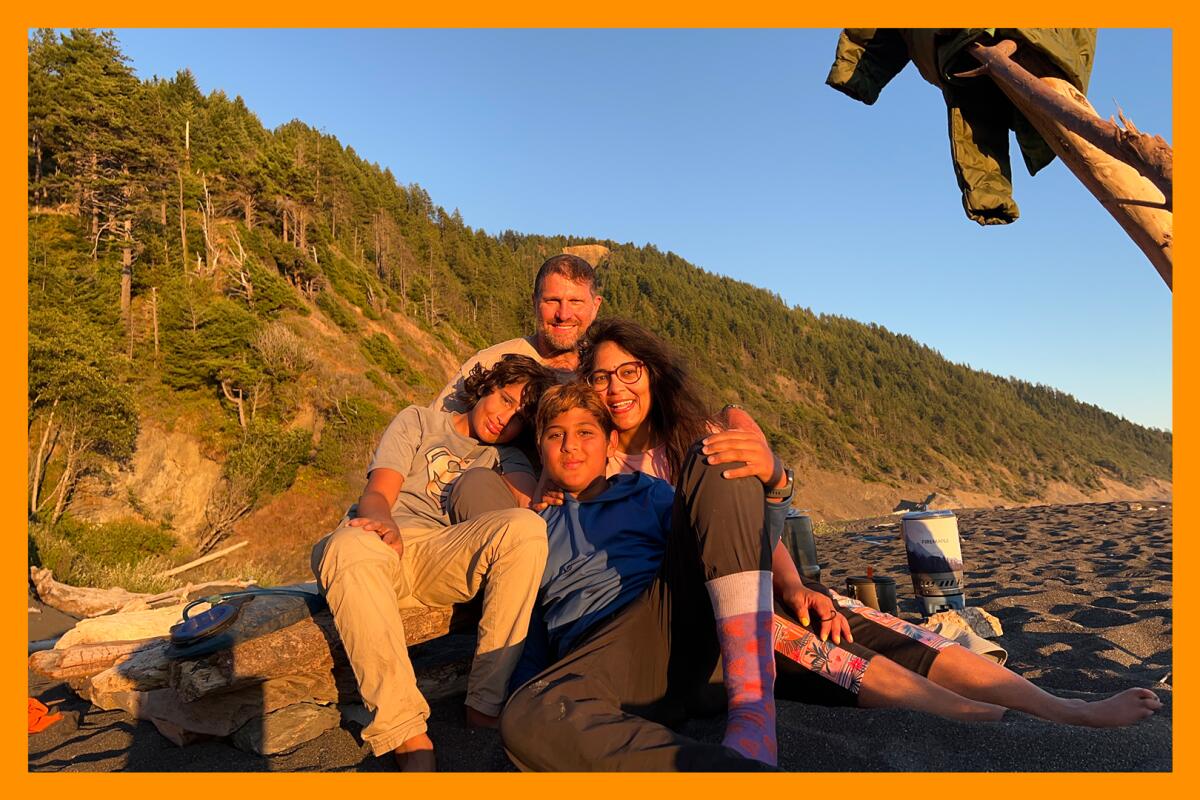
After some discussion, we decided to go for it. It was going to be a summer adventure that would be etched into our memories for life and give our children an early appreciation for the outdoors and self-reliance.
We did a few practice hikes with the kids — one to Mt. Baldy and another to a spot around the Palm Springs Aerial Tramway to get them used to carrying their own gear and to figure out what else we might need.
What we discovered on those trips is that if you go with another family, the kids will likely be too busy socializing to complain. It’s also helpful to hike the Lost Coast Trail with another family because one family can park at the start of the trailhead and the other family can park at the end, so everyone has a ride. For both of these reasons, we planned to take this adventure with friends from the Bay Area.
We were all set, or so we thought.
Days before the trip, the other family tested positive for COVID, which meant we were on our own.
We had read that ride-hailing apps aren’t reliable in that part of the county because it’s so remote. The only viable option left was booking a shuttle back to our car. We had planned to finish our hike late Sunday afternoon, but since the only available shuttle pickup was at noon on Sunday, that meant we were losing almost one whole day of our hike even before we’d started on it.
In addition, some parts of the trail are only passable for a few hours each day, during low tide, which meant having to carefully plan where we stopped, when and for how long.
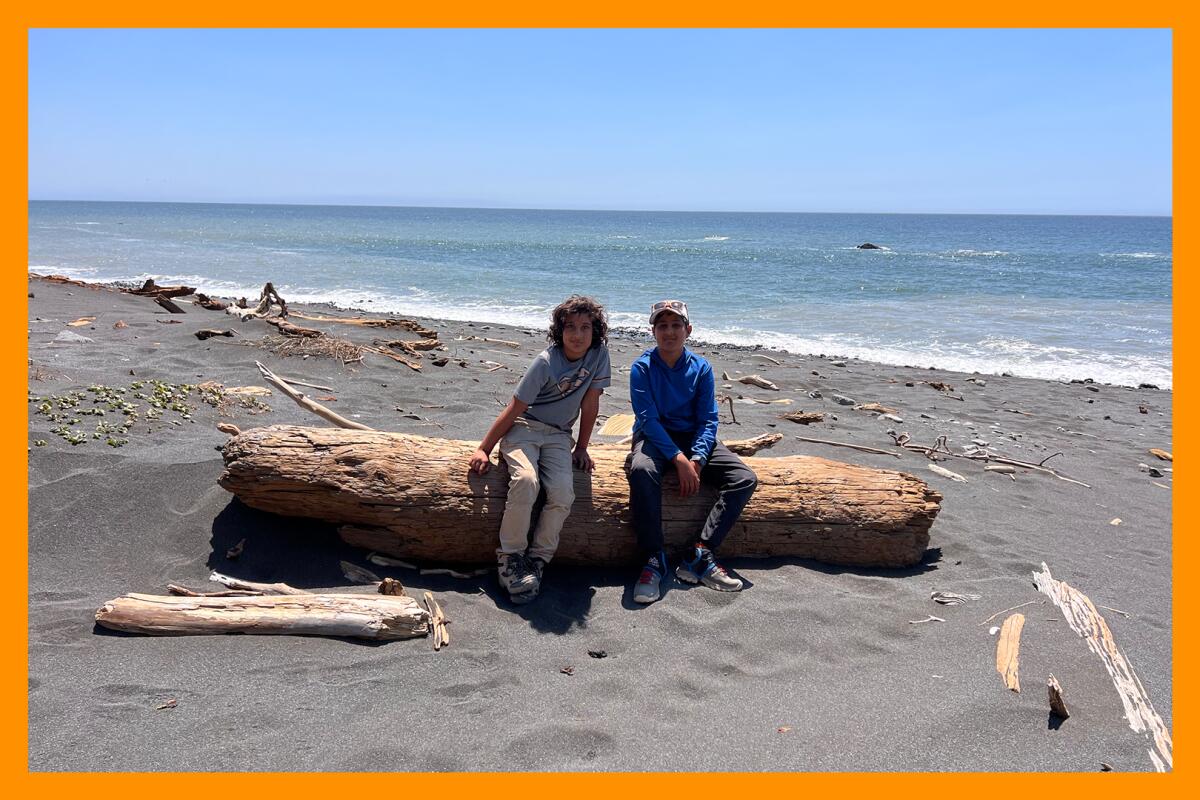
The start of the trail had one of these so-called impassable zones, so, on the first day of our hike — a Thursday — we’d need to catch either the 6 a.m. low tide or the 6 p.m. one. Since we were driving up from the Bay Area (about a 5½-hour drive), that meant the evening low tide, which resulted in losing another day.
That left us with a start-to-finish timetable of Thursday evening to Sunday at noon — less than three days for a hike that was estimated to take us four full days. Could we do it?
We put on our can-do attitudes and forged ahead. Nothing was going to stop us at this point.
Starting in the evening ended up having its benefits. As we crossed the first impassable zone, we stumbled upon a colony of elephant seals. There were old ones and babies and the biggest of the bunch tussled on the sand.
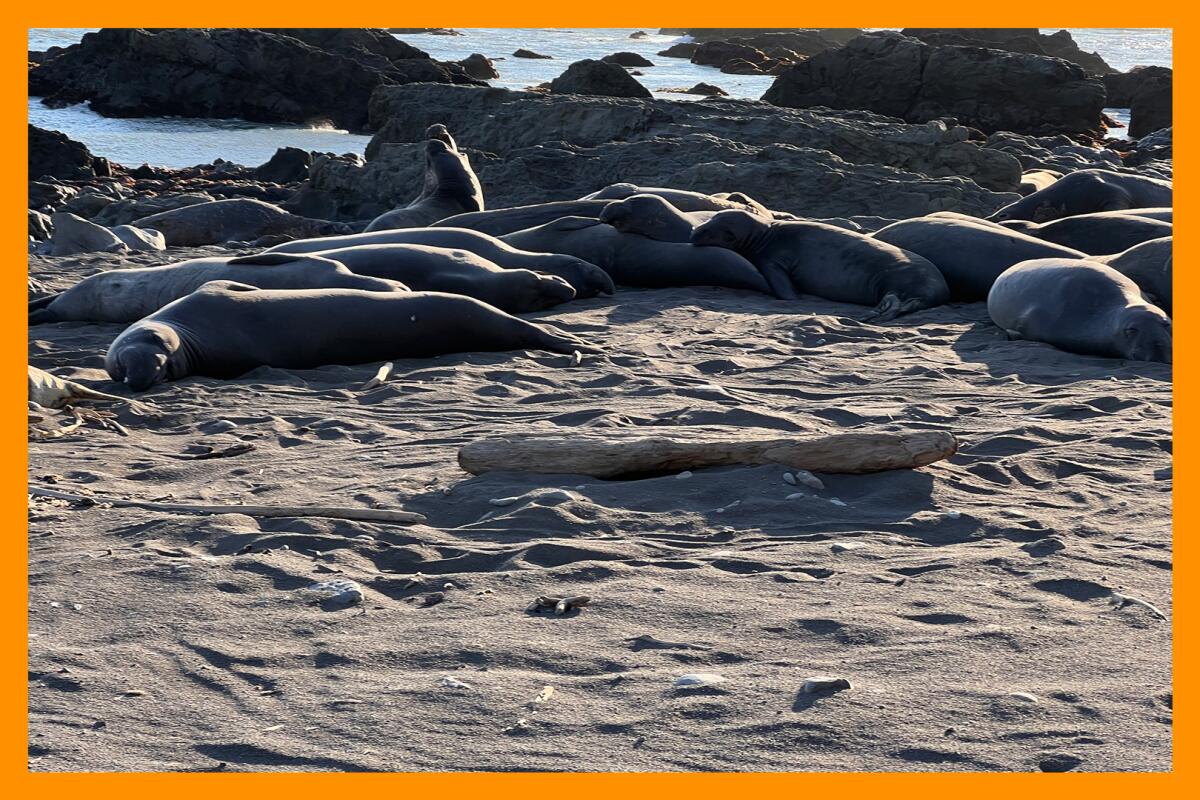
The extra time spent observing the seals meant we got to our campsite at night. We were going to be sleeping on the side of a mountain, overlooking the ocean at a spot called Sea Lion Gulch.
As we were setting up camp we discovered that the stove we had borrowed from our friends wouldn’t light.
The kids were hungry and tired. My wife and I started to panic.
“If it doesn’t work, we’re going back home,” Julie declared.
She had a point. Three days of not being able to heat up dehydrated meals was a deal breaker. This was going to be a truly impassable hurdle.
Just when we had almost lost hope, we noticed that the couple in the only other occupied nearby campsite still had their light on.
They turned out to be much better planners than us and had brought three lighters. They gave us one to use and take with us.
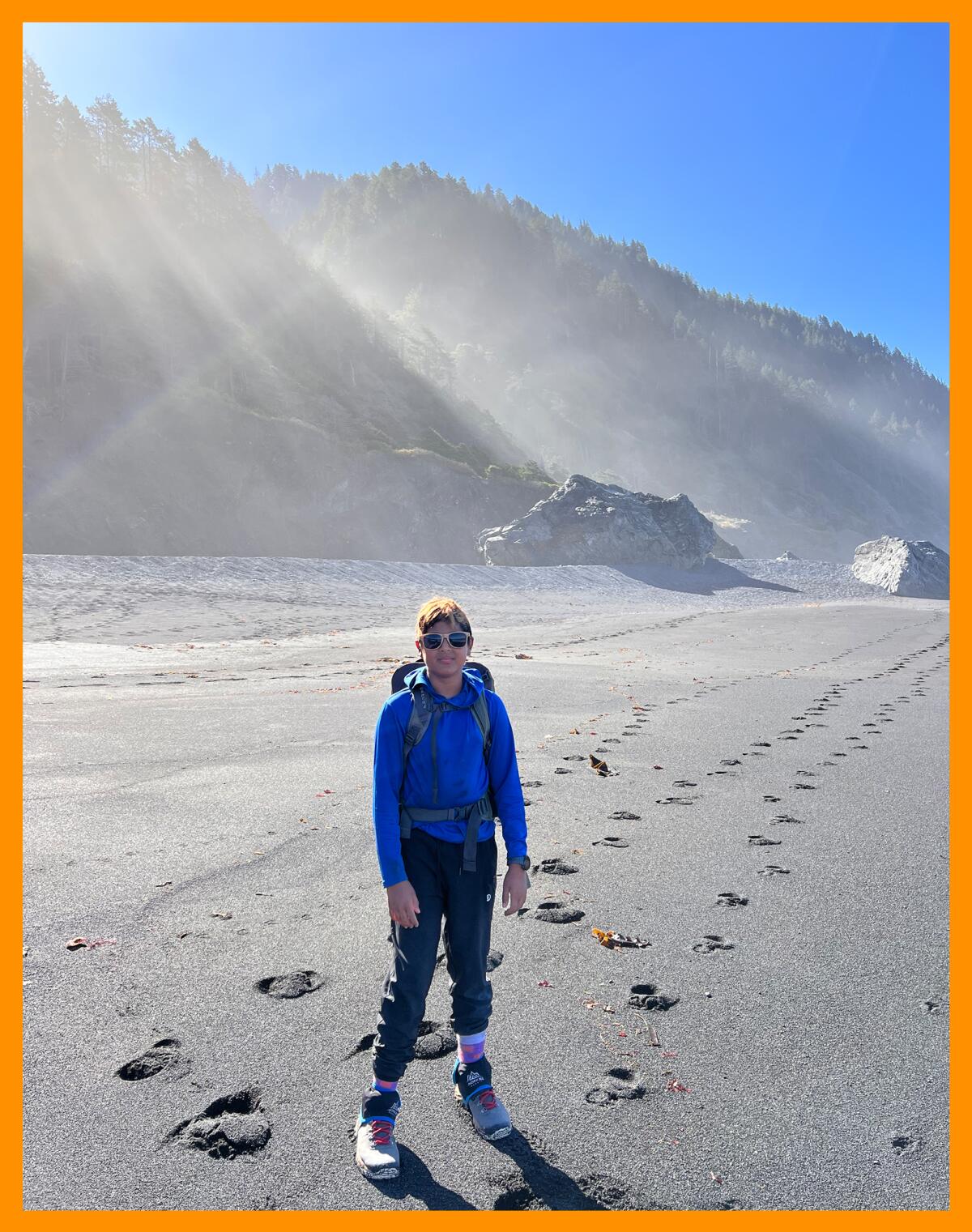
The next morning’s low tide was at the crack of dawn. We had to wake up before sunrise to take our tent down and pack up so we could make it to the second and much more challenging impassable zone.
Having a mission to get past an area that would soon be getting pounded by rough, cold waves kept the kids focused and attentive. Those areas of the beach are peppered with big and small rocks, which makes walking tricky and strenuous. Although my kids love jumping on the couch and the bed, and balancing on the edges of sidewalks, this rock obstacle course was like nothing they’d experienced before, and a few hours into our first full day of hiking they were starting to feel worn out.
Along the way, we explored tide pools and spotted many birds, even an eagle’s nest. Seals and sea otters peered out of the water at us along the way. It felt like they were rooting us on. Hiking on some of the bluffs higher up gave us a reprieve from the rocks and sand, but the trade-off was that we had to navigate through poison oak and spray our clothes with tick repellent. Back on the beach, we saw bear paw prints that were so fresh that waves washed them away as we were looking at them. We all kept looking around for the bear, but never spotted it.
When we finally made it to the Miller Flat campground — after a brutal day of hiking 14 miles (with a few meltdowns along the way) — we were greeted by deer scampering around, fish in the creek and happy campers filling most of the sites.
The next couple of days were shorter and easier (6.4 miles on Day 2 and 2.1 on Day 3). We got to see big spouts of water shooting up in the distance from whales, more starfish than you could count, giant abalone shells, jellyfish, sea urchins and so much more. We also explored a redwood-filled canyon creek that was as lush as forested trails in Hawaii.
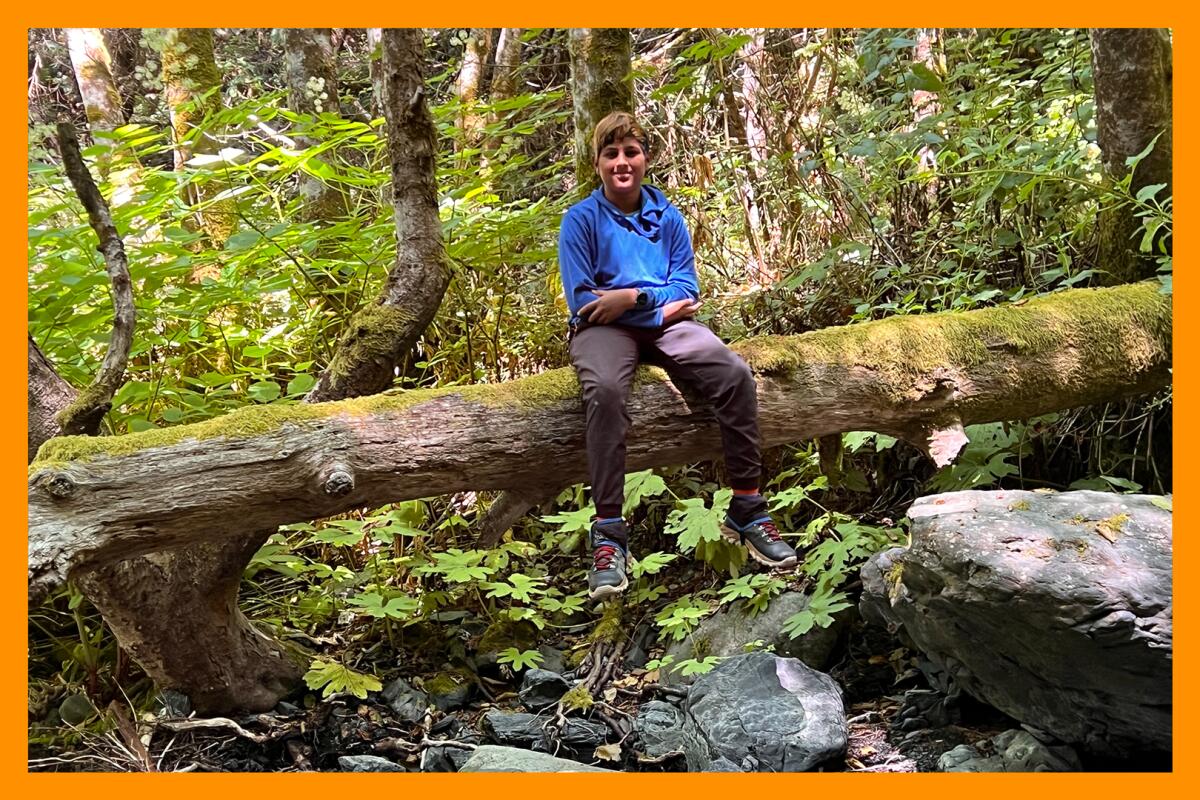
By the end of the hike, we were tired, sore, stinky and happy to be done. We drove up the Oregon coast and had another week of vacation (in Portland and Seattle) that was relaxing and comfortable, but that’s not a big part of the stories we’ve been telling folks as we recount our summer vacation — it’s all about the Lost Coast.
And I think the poor planning actually added to the adventure. Sure, it resulted in a very long day of hiking, which was a challenge, but like elsewhere in life, there are ups and downs. and to truly appreciate the highs you have to struggle through the obstacles. People who plan better than me probably knew when and where that colony of elephant seals would congregate, but for us it was serendipitous and magical because we had no idea we were going to see them.
I don’t want to diminish proper planning. We charted out our hike, knew the tides and clung to our map. If we hadn’t, it could have been tragic. But not knowing every step left us with challenges to overcome and surprises to be discovered.
3 things to do
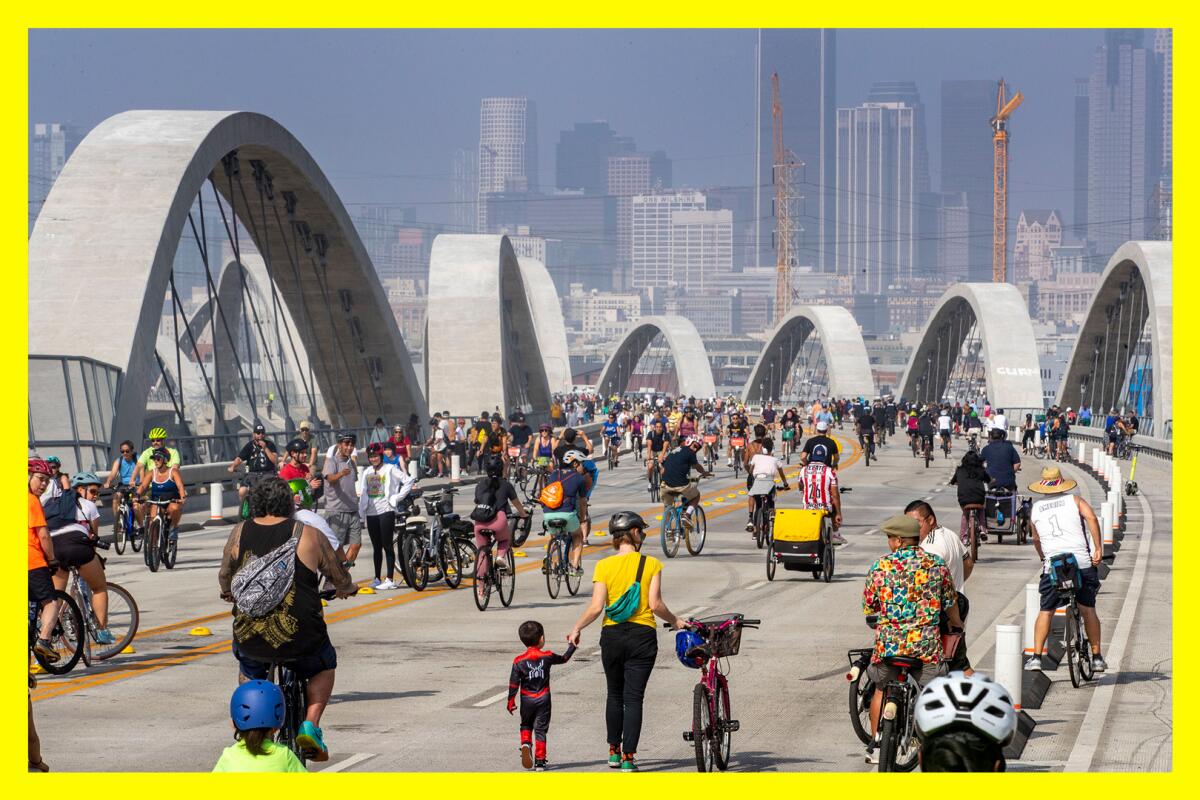
1. Walk the car-free streets of downtown L.A. “CicLAvia — Heart of LA,” is the Metro-presented open streets event that will close off a 7.8-mile route through downtown Los Angeles to cars for seven hours on a Sunday and allow participants to jog, ride, bike, skate, run, walk, skateboard, spectate and play through parts of Chinatown, Little Tokyo, the Historic Core, South Park, the 6th Street Viaduct and Boyle Heights. Oct. 15, from 9 a.m. to 4 p.m. The event is free; all you need to do is show up anywhere along the route, which you can find on CicLAvia‘s interactive digital map. That map will also come in handy as you plan what you want to do along the way. ciclavia.org

2. Grab a pitchfork and get ready for some competitive composting. Do you have what it takes to tackle the Great Compost Challenge? Find out on Oct. 14 from 10 a.m. to 12 p.m. at one of four L.A. compost hub locations, where competitors (either solo, in pairs or teams) will go pitchfork-to-pitchfork in activities like layering food scraps to compost piles, adding mulch, turning the pile, moving material with a wheelbarrow and adding finished compost to garden beds or fruit trees. For more information, specific locations and to sign up, go to lacompost.org.

3. Watch a scary movie in the great outdoors. Cinespia‘s upcoming screening of horror movies has several opportunities to take in a scary movie under the night sky. Although an Oct.14 showing of “Halloween” at the Hollywood Forever Cemetery is already sold out, there are still tickets available for a screening of “Harry Potter and the order of the Phoenix” there on Oct. 21 (gates open at 5:30 p.m., the film starts at 7:15 p.m.). The night before that, at another outdoor location — Los Angeles State Historic Park — a screening of “the Ring” is set to take place (the gates there open at 5:45 p.m. followed by 7:15 p.m. screening). The last film in the series is showing indoors — at the Orpheum Theatre — but is worth mentioning because it’s on the night of Oct. 31 and is a costume-required Halloween party and screening of “Rosemary’s Baby.” For ticket prices and additional information, go to cinespia.org.
The must-read
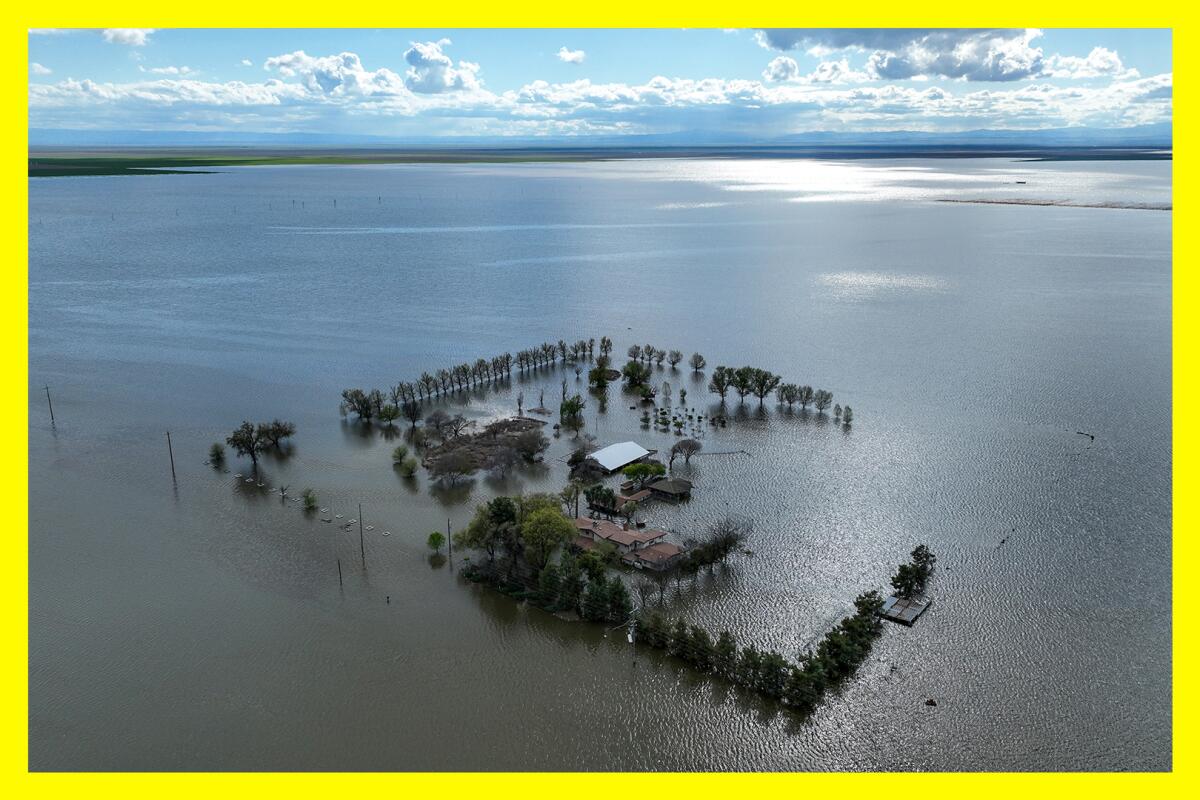
Most people who appreciate the outdoors would like to preserve nature so it can continue to be enjoyed for generations to come. But the planet is getting hotter and “natural” disasters are occurring with more frequency and intensity. In an attempt to face these issues, The Times recently launched an ambitious new project called Climate California.
The section has already produced many incredible stories, but the one I want to bring to your attention is, “How powerful land barons shaped the epic floods in California’s heartland,” which shows how a giant agribusiness built a system of levees to protect its own land and flood others, placing thousands of families in danger during the epic Central Valley flooding earlier this year.
A team of reporters from The Times spent months conducting interviews, reviewing documents and driving and flying around the Tulare Lake Basin to understand what happened.
What they found is a “region that operates more like a secretive fiefdom ruled by a handful of legacy farming clans than a publicly governed jurisdiction.”
Support this work by reading these articles and checking in regularly to see what the team is working on.
Happy adventuring,

P.S.
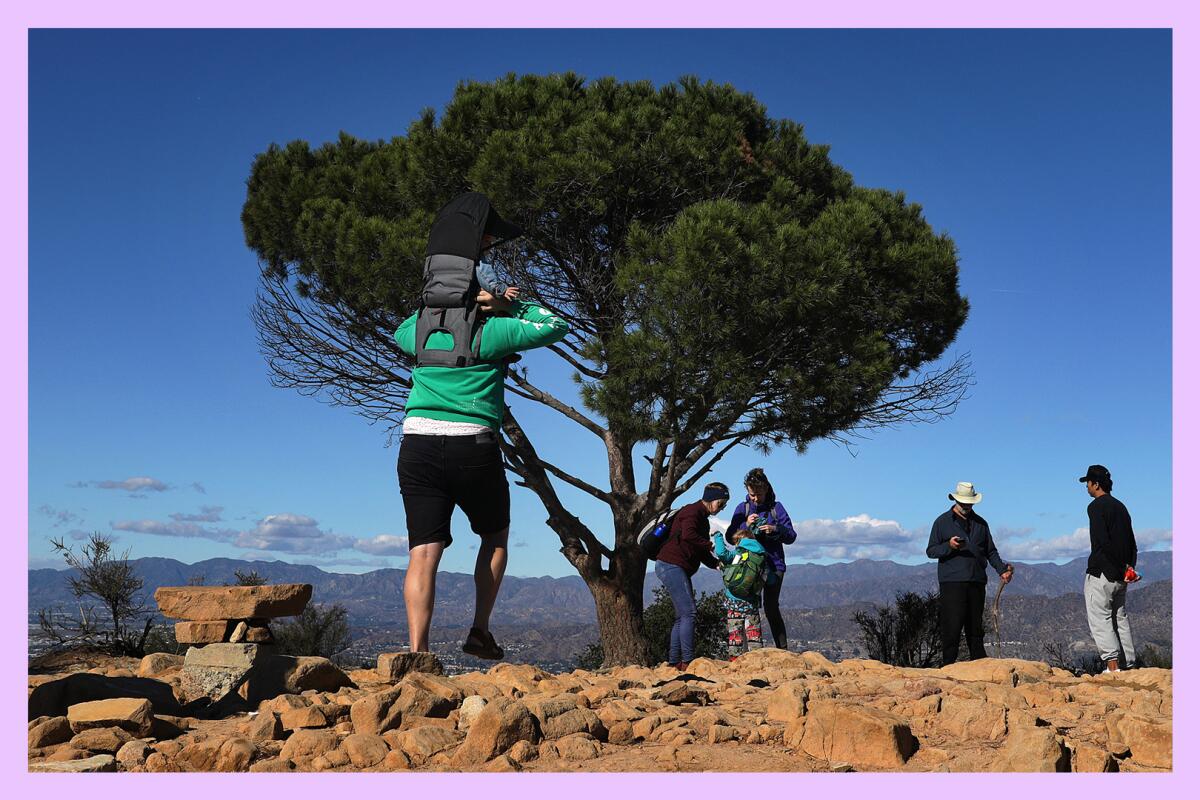
In the Sept. 7 edition of this newsletter, after guest wilder Kelcie Pegher extolled the virtues of kvetching on the move, she put out a call out to readers to see if there were any kinder, gentler and better-sounding ways to refer to what she had dubbed a “rage hike.” The next day the following email landed in The Wild’s inbox:
Hi!
I am a psychotherapist in N.Y. who walks and runs with clients and I just read your article, “The cathartic release of a weekly ‘rage hike’ has science behind it.”
Well done, and I’ve got a word for you:
Treelease: the letting go of inner turmoil while being among trees and the more-than-human world
And, I might point out that there is science behind this word as well. Trees release phytoncides, which help reduce cortisol and regulate mood!
Have a wonderful weekend!
Maria Antell, LCSW
Based on Antell’s suggestion, it’s goodbye “rage hike” and hello “treelease” over here at The Wild. Now bring on the phytoncides!
For more insider tips on Southern California’s beaches, trails and parks, check out past editions of The Wild. And to view this newsletter in your browser, click here.
Sign up for The Wild
We’ll help you find the best places to hike, bike and run, as well as the perfect silent spots for meditation and yoga.
You may occasionally receive promotional content from the Los Angeles Times.




